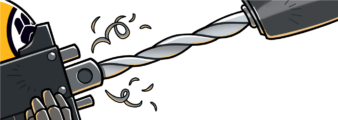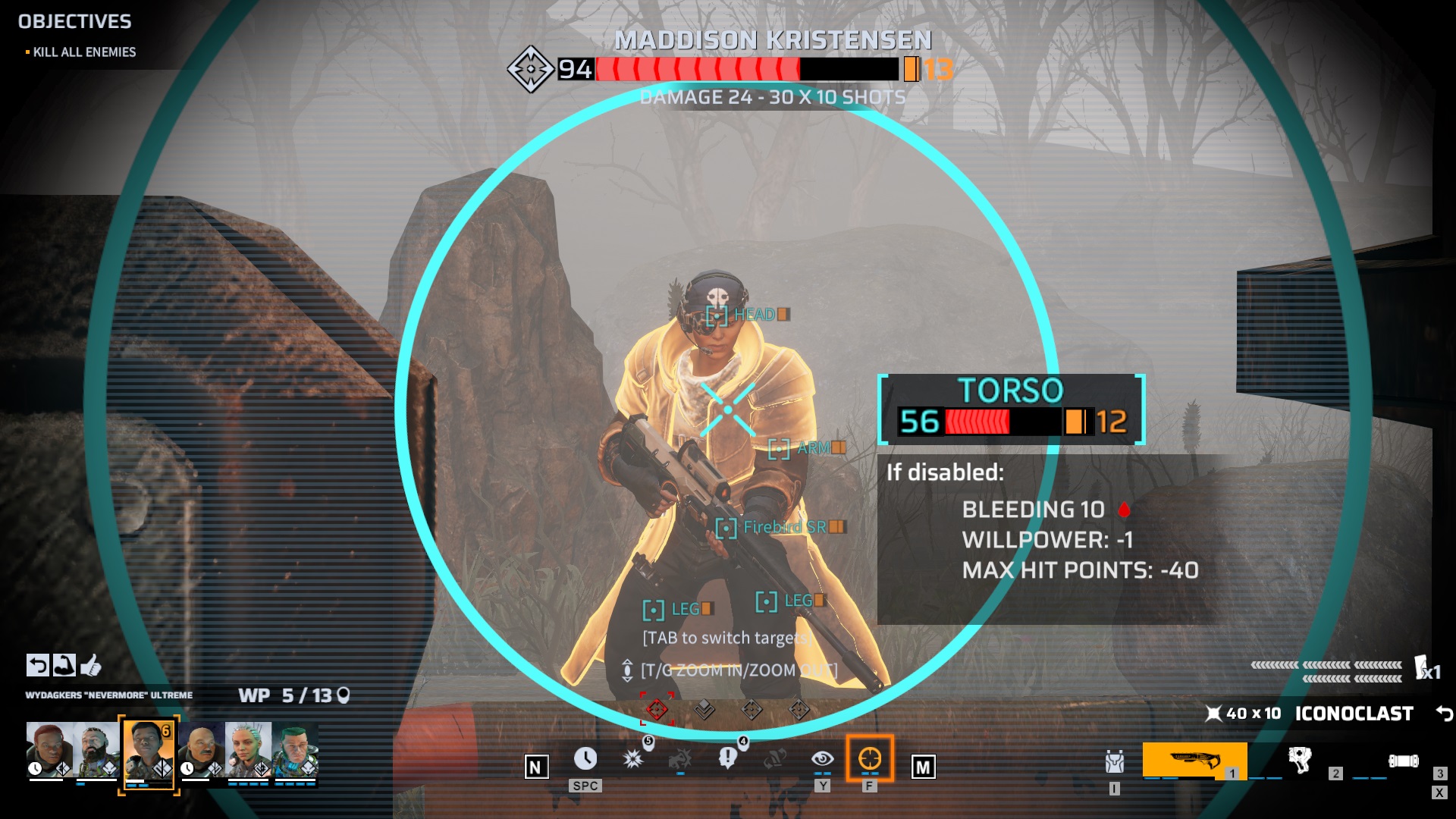I’m too young to have been brought up on X-Com: UFO Defense (or UFO: Enemy Unknown – that’s how it was called outside the US). In fact, I played some of its terrible imitators long before I tried the real thing. I’ve probably spent more time on XPiratez more than on the original game. I finished XCOM: Enemy Unknown with Enemy Within, I gave UFO the good ol’ college try, and the most prominent Lithuanian video review of Xenonauts features the sound of a spoon (previously stuck to my skin) dropping on my table. There was no way I wouldn’t review Phoenix Point, a game headed by the man who built the damn genre.
(Actually, the odds of me not getting to review it were more than great).
Most of the dumbshit XCOM imitators (as well as the good people who made UFO and Xenonauts) tried to recreate the formula of the original game: aliens are invading and you’re trying to repel them on a shoestring budget. Shock Tactics tried to go a different route, but it’s the worst game I reviewed for Strategy Gamer, so they clearly failed. Phoenix Point says “fuck the aliens” and sets you against Pandorans, horrible mutants created by a virus that freed itself from melting permafrost in Antarctica (thanks, capitalism).
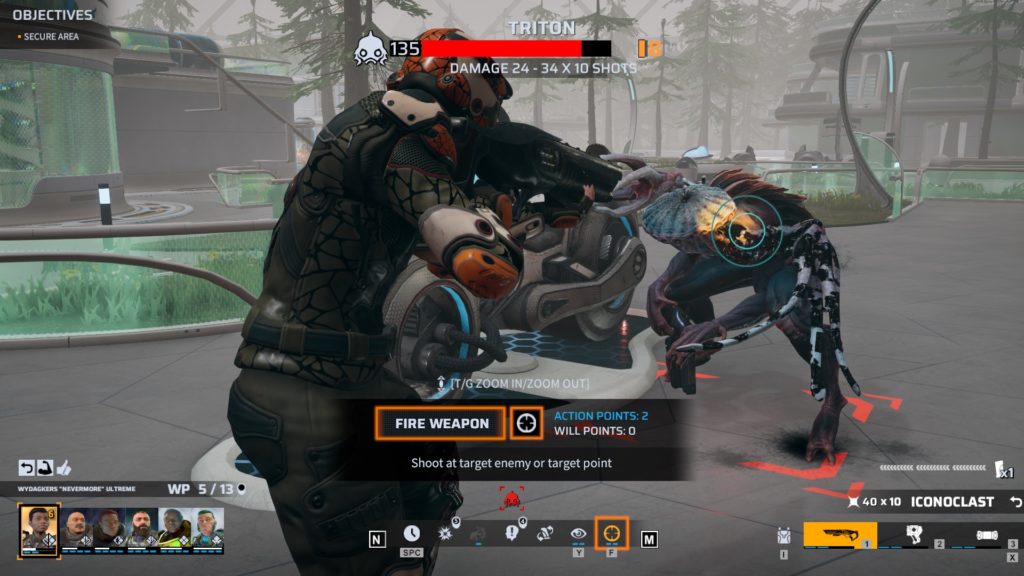
By the time of the game, Earth has already fallen to Second Impact at least two Pandoran invasions from the sea as well as World War III. Phoenix Project – your crew – has been defunct for years. What’s left of civilization? Three factions huddling in their havens, some abandoned Phoenix Project bases, and the notes an old man that used to lead it left behind. You are implied to be the last surviving operatives – or the spirit guiding them since no player character exists – tasked with rebuilding the Phoenix Project network, stitching together the notes Randolph Symes scattered around the world like he was a background character in a System Shock game, and kick the… well, not-exactly-alien ass.
Off to a rough start
And that’s where Phoenix Project first falls on its face. We live in a post-XCOM era, a time in which we expect polish and immersion from the word “go.” Lift the veil of ages and remember the XCOM tutorial. You’re the commander. You have your group of operatives tasked with clearing a warehouse. Many of them die preventable tutorial deaths. You have a shadowy person representing the world powers in control of XCOM. You have faces to put on the science and engineering that bolsters your efforts. XCOM lives and breathes.
Compare it to Phoenix Point where, if you skip the tutorial, you’re just five randies in Phoenix Project gear that have started squatting at Phoenix Point, the HQ of the project. You jump into the Manticore, the VTOL transport, and start going places and shooting peo- Pandorans. The description of base structures says your research is handled by AI. Manufacturing just happens. As far as you know, you’re just some cargo-culting cosplayers in admittedly good-looking future armor toting guns that some madman made in conscious reference to M41A Pulse Rifle (sorry, not underslung shotguns!).
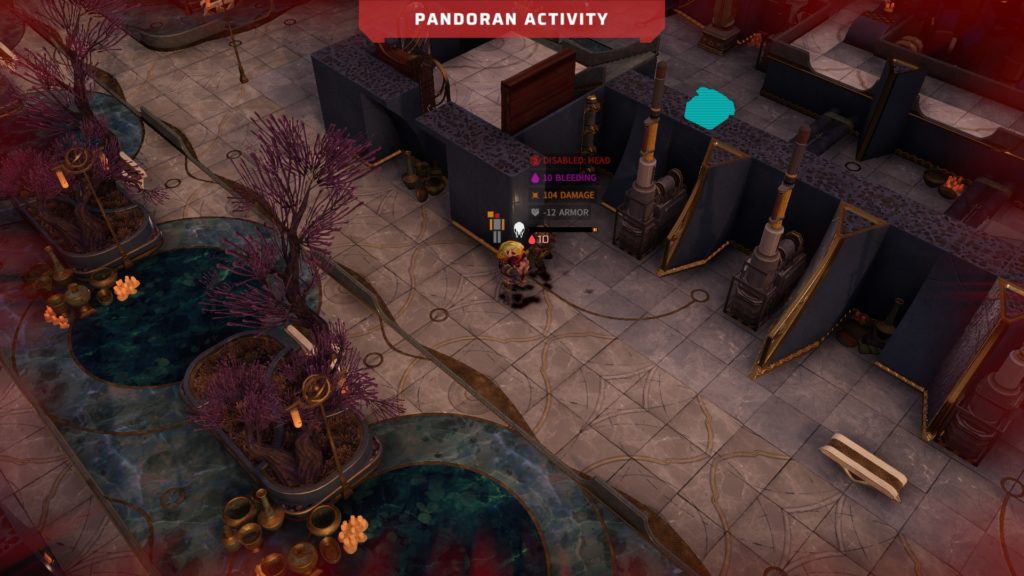
The game truly starts with a Phoenix Project base placed somewhat randomly in the world (already containing a few necessary structures), a Manticore VTOL (seats 6, flies fast) and five troopers (3 Assaults, 1 Heavies, 1 Sniper). What you can now do is travel to one of the unidentified nodes on the map to explore them.
You may also start an Area Scan – an expanding radar sweep that gradually discovers new nodes in the area. You can’t just fly to the other side of the world – if you don’t have enough nodes for your transport to reset its flight range, you’re out of luck.
When “Innsmouth look” gets out of hand
But who cares about the Geoscape actions when you have disgusting mutant scum to shoot? Phoenix Point threads the needle between the fiddly Time Unit system of the original and the two actions allowance of the reenvisioned XCOM. An Action Point (each trooper gets 4 per turn) can be spent in full (for actions) or partially (for movement). So you have a lot of freedom of movement (depending on trooper stats) and fire. You want to move-fire-move? That would be an ability in XCOM, but it’s just a natural thing in Phoenix Point.
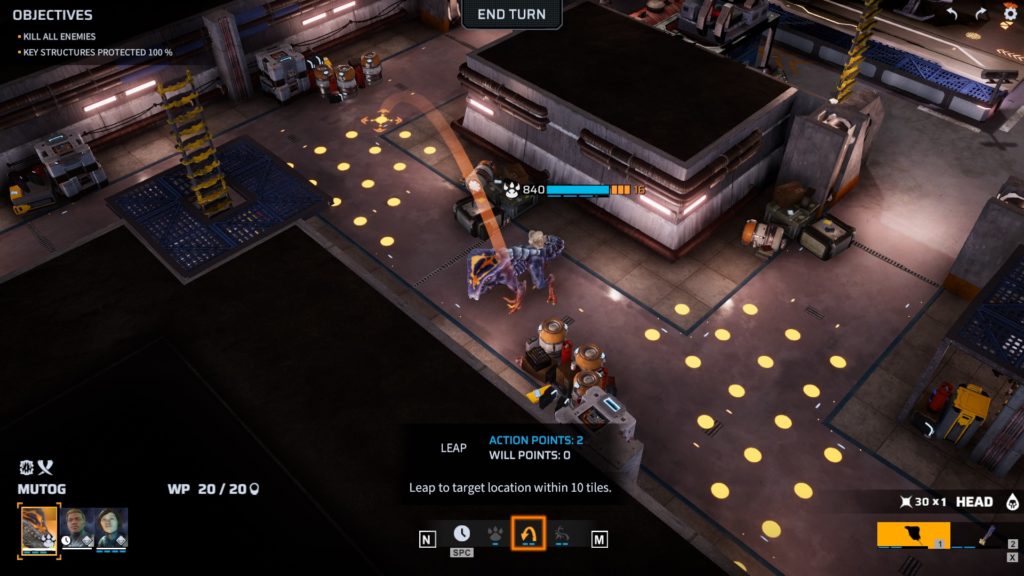
Most of the trooper abilities in the game deal with fucking with the action economy and the Willpower system. WP is a combination of morale and special power juice – and it doesn’t regenerate by itself. You spend it on powers or lose it when your troopers die, and you regain it by resting for a turn or killing enemies. That goes for Pandorans as well – you can actually break a crabman by killing his friends.
*blam* *blam* *blam* “Place that use to be ‘Merica!”
How do you kill them tho? Why, via the slick combination of two systems: one that allows for free aiming and simulates each bullet individually, and one that cares a whole lot about location damage. You can allow the trooper to aim by himself, but you’ll find yourself doing it personally more often than not. That’s because location damage – disabling limbs – is more than just about depleting the healthbar (though crippling certain body parts can lead to great drops in health).
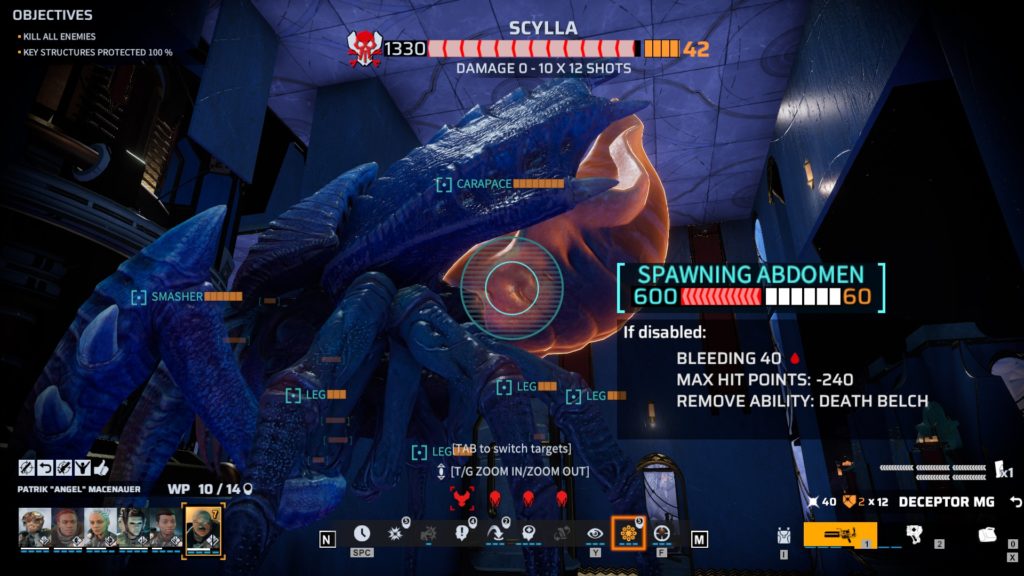
You will use the Sniper to surgically detach weapons from the arthron crabmen, as their arms are just tangles of cartilage. You will use it to destroy weapons in the hands of more human enemies. You will desperately need to take down limbs when you run into huge enemies – Charons and Scyllas (the alien queen you already know) – which are too big to easily kill. This doesn’t always work – Chiron artillery butts are probably the best-protected parts and Siren’s mind control power isn’t limb-dependant – but when it does, it’s amazingly fun. Just look at that armless arthron making a beeline for the map border like he was Abaddon after I-XII Black Crusade.
Mindfraggers, a very early mind-control enemy, probably exist purely to show off the Phoenix Point damage system. Once a Mindfragger runs up close to your Heavy (it’s always the Heavy), his membrane-mouth head will detach and hop on the head of the trooper. He’s now mind-controlled. However, the Mindfragger is now a physical object that covers the soldier’s head – and you can shoot it off. The head is still an object by itself, so you can hurt your soldier, but hey, headshots don’t mean death in this game.
Phoenix Point advises using handguns for this task, but I found that assault rifles and even grenades work just as well.
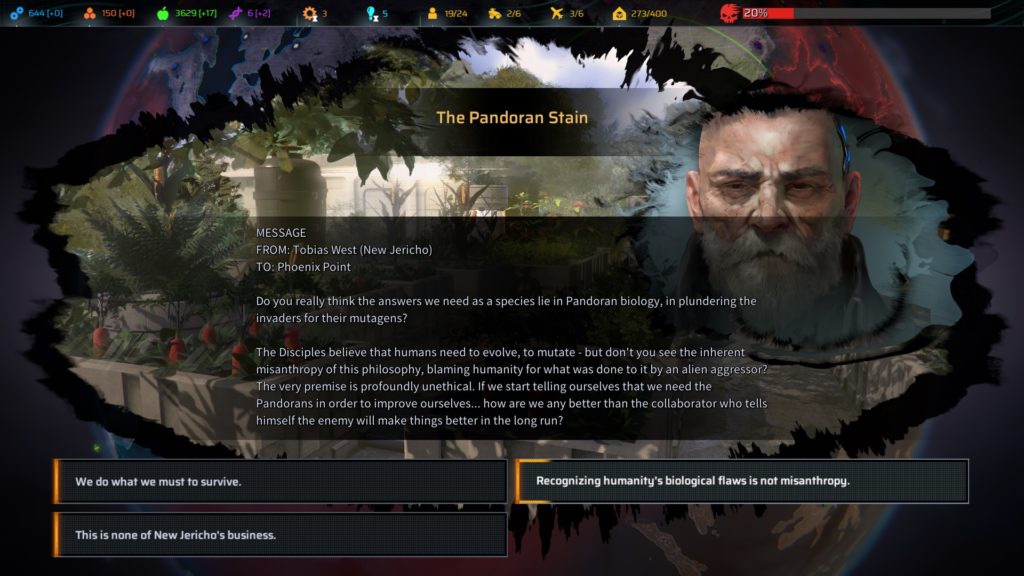
Incidentally, AoE weapons are bullshit in Phoenix Point. They mostly ignore intervening terrain and impact many body locations at the same time. And the enemy – mostly Pandorans, but also humans – will have more of them than you do, will outnumber you, and have no care for ammo. It’s bad enough when arthrons start appearing with MGs and grenade launchers. But then Chirons, – the support artillery/the first really large monster – upgrade their butt powers from shooting immobilizing goop and fire/acid worms to launching acid artillery barrages that can one-hit-kill a trooper or a few.
All is fair in love and war against crabmen
What helps you even the field a little in Phoenix Point is abusing your abilities. Unlike in XCOM, they’re not something that should be just a normal soldier skill (like moving after shooting) arbitrarily gated off behind a class. No, all of them allow you to break the rules in some way, like the Sniper’s Quick Aim increasing the accuracy of the next shot and making it 1 AP cheaper – all for paltry 2 WP (you can regain those by killing a single enemy). Surprise, you can now do two extremely accurate sniper shots per turn – or fire something like 8+ pistol shots.
However, just like in any game, some abilities are better than others – and this plays heavily into the multiclassing scheme. At level 4, a trooper can take up a second class – without any penalties. Most of the time, that class will be Assault. Most everyone can benefit from their level 2 power to fire back at any enemy that’s attacking within their Perception range – even if they’re attacking someone else.
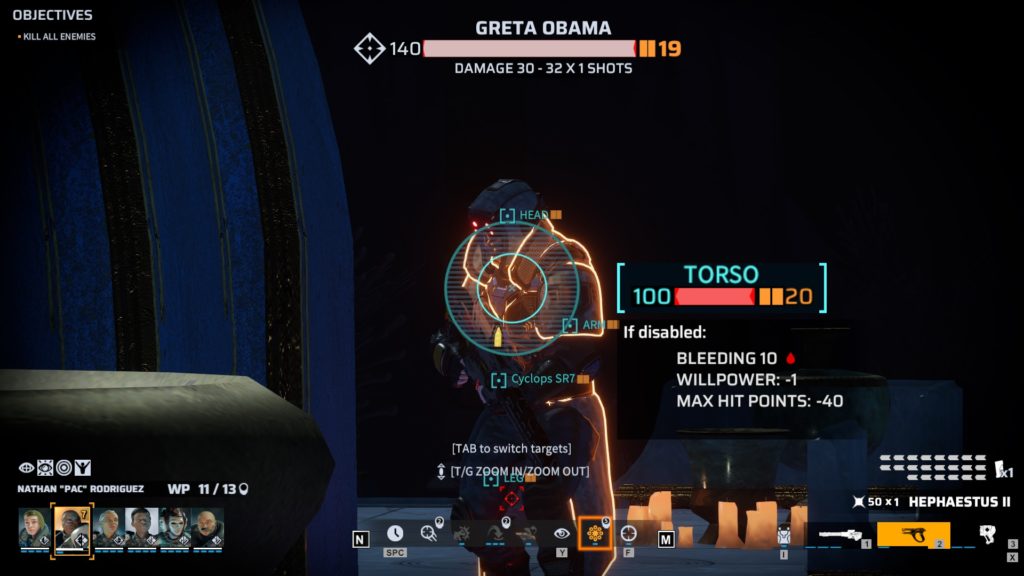
However, Dash, the level 3 power, is what brings the much-needed mobility to the table by letting you move basically 2 APs-worth of range for 4WP… and can be used as long as you can pay for it. It’s a killer for anyone, but Heavies and Berserkers, the melee class, benefit from its AP-saving moment extra hard – especially since their attacks are costly.
Eventually, Dashing becomes so natural, moving for AP starts to feel wrong.
Tobias West loves watching “The Triumph of Will”
Luckily for you, the enemies in Phoenix Point also use the Willpower system. And while it’s unlikely that the Pandorans will visibly run out of WP and be unable to fire off powers, you can actually break the enemies in this game. Sure, you won’t make them run away and give up, but making a foe skip a turn in favor of running away to rest (that’s what your troopers do when they go to negative WP) is a boon… and also very fun.
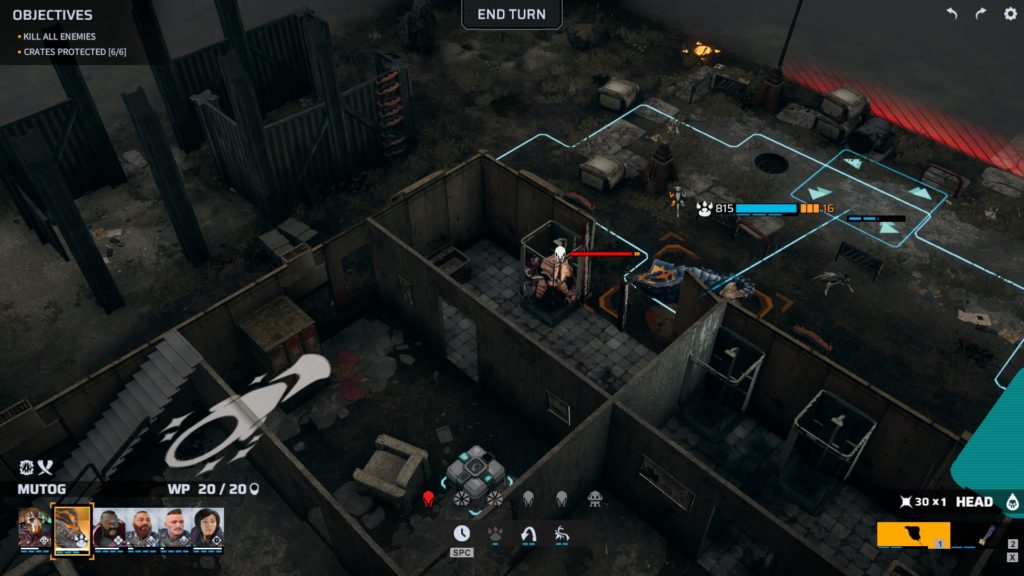
However, I can’t say that I noticed any purposeful mutation in response to my fighting style in action. Sure, everyone was gaining more armor and health, but the reason why one arthron was wielding shield-and-pincer or MG-and-GL was never obvious. The uparmoring does eventually become an issue – so how do you deal with it?
Well, the armament race in XCOM is basically a breathless loot research treadmill to replace rifle with a laser rifle, which is just rifle+1. In Phoenix Point, research is more about reverse-engineering loot for your own manufacture and faction weaponry is mostly sidegrades, trading one stat for the other. Pour exemple, Synderion prioritizes in range and magazine size anything else while Disciples of Anu believe that range is for cowards, so they’re the only ones making melee weapons as well as offering shotguns and pistols that do a ridiculous amount of damage.
Doing war crimes on mutants
Each faction in Phoenix Point has a different way of dealing with uparmored enemies. Jericho is straight forward, producing Piercing weapons (it’s literally in their name) and investing in flame-based heavy weaponry (flame is fun and effective). Synderion does sneaky, indirect stuff, like stealth and venom. Disciples of Anu, however, go hard on fuckery, offering viral (to strip WP as well as health) and acid (eats armor before eating flesh) guns.
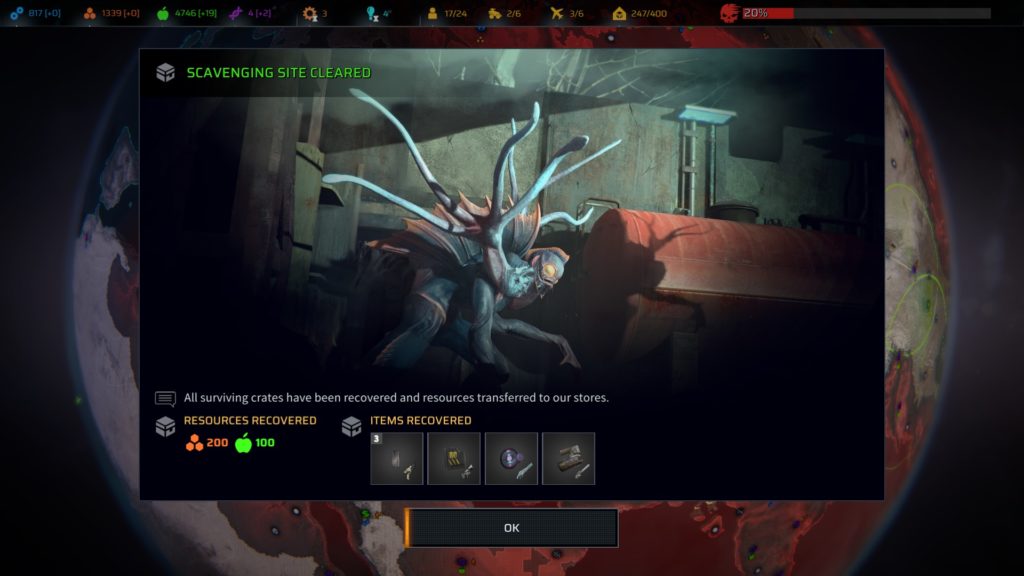
It doesn’t take a genius to see that some of the straightforward approaches work better than others. You need to wait till the next enemy turn to see viral take effect (if you can make it stick in the first place) – but AP is killing Tritons right now.
“Duncan,” she says, “there’s more to life than Phoenix Point!”
In general, there is some refreshing variety when it comes to the interplay between the factions. New Jericho are just fascist grunts headed by a billionaire who likes to talk about THE STRENGTH OF HUMAN WILL a whole lot. Synderion, the anarcho-communist iFuture (the strangest stylistic choice in the game) faction is torn between those who want (re)terraform the Earth and those who want to adapt. And Disciples of Anu have the whole “worshiping the mutations” and “mysterious cult hierarchy” thing going.
Each of the factions has a reason to mistrust the other, provides different missions, offers their own variety of recruits (in fact, you don’t have any other way of replenishing ranks), may ally with you to provide you with their tech (or you can just steal it) and even develop projects that impact the world in Geoscape. It’s up to you to see which one will get to cooperate with the Phoenix Project.
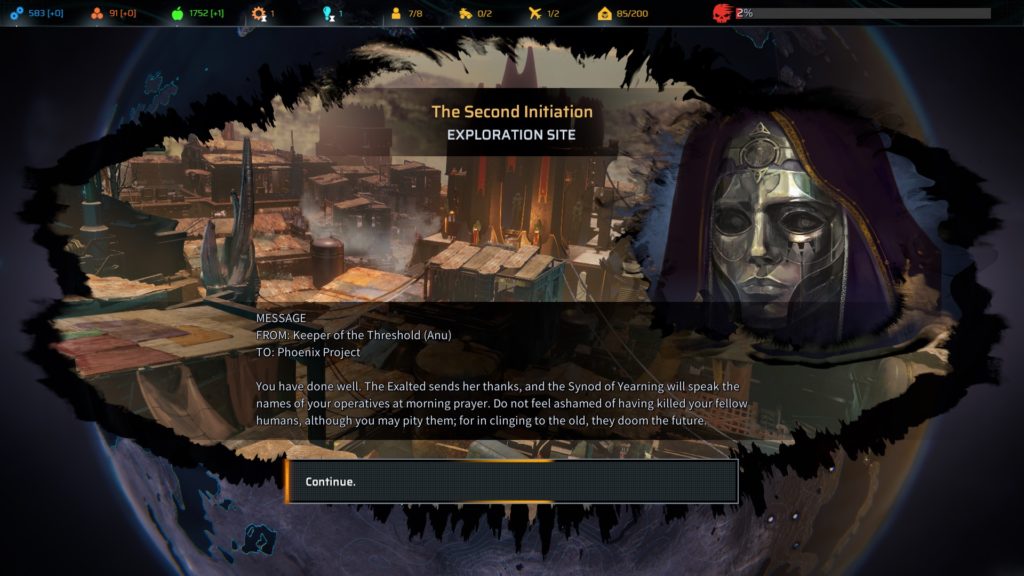
Faction missions also provide the greatest variety in environments in the game. Most neutral missions will just take place in two or three reshuffled vaguely-futuristic ruins. Haven defense (that’s when Pandorans attack havens with the aim to destroy them) will slot you in an environment that depends on the faction in question and the area of haven under attack. Disciple shanties and factories are colorful OSHA nightmares strewn with explosive barrels while Synedrion is, again, iFuture (that shouldn’t really exist considering the state of the world).
There are some bad sides to the apocalypse, you know
Your interaction with factions, their haven motos and the short text events that you may encounter on new nodes (as well as by visiting havens) breathe some much-needed life into the game. It helps populate the world and paint the picture of the world’s end when Phoenix Project itself is faceless. When you get messages about spooky stuff happening to Project personnel, you go “what personnel?” Did someone kill himself due to spooky dreams? But all of my soldiers are right there! I’m not even paying food upkeep for anyone outside my strike teams!
Oh, and lest I forget: balance. Phoenix Point has real issues with balance. I already mentioned how terrible the Charon scaling is. It’s also not that great when it comes to weapons. Heavies are very hard to train up early in the game as their Hel cannon, powerful though it is, is extremely inaccurate at non-point-blank range. It’s also hard to get there when you don’t have Dash. Mutog, the vehicle-class critter you get from Disciples, looks extremely cool, but he’s just too weak in both endurance and damage output (those sub-pistol level paw swipes) for a monster that takes three spots on a transport.
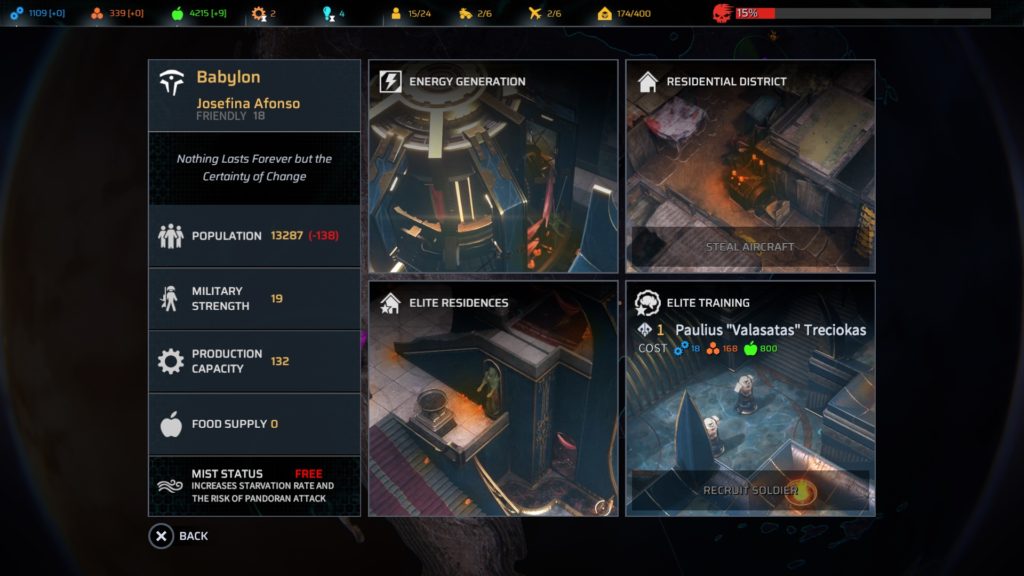
Granted, the game is too big and too intricate to talk about various small indignities that arise during the play. I can still say a few things about the visuals and stuff, though. Most of the time, the graphics are OK. The Pandoran Lair maps are terrible, but maybe that’s just me. Phoenix Armor and most of the stuff you get from factions is nicely designed and not too generic. However, when it comes to troop customization, many of the male faces are horrible and the armor colors are too damn bright.
There are some issues when it comes to writing, from the insistence of calling the infection the Pandoravirus (one word) to weapon descriptions being just “<faction> <firing mechanism> <weapon-class>.” Audio has its own issues due to bugs, and while unit barks are repetitive, at least the voice acting is mostly good. In fact, old man Randolph Symes might be the weakest bit while Disciples’ own Nergal is the strongest.
When I first fired up Phoenix Point, I was unpleasantly surprised by everything I saw, from the slideshow cutscenes to the UI. However, the game has a way of winning you over via its gameplay, its attempt at being unique in both setting and mechanics, and just the sheer ambition of trying something new in the day of copying AAA and hoping for the best. I will recommend people try out Phoenix Point – and also wait for both the promised DLCs and patches that will hopefully polish its many, many rough edges.
